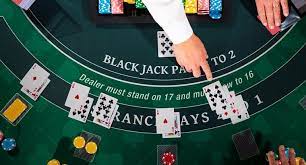Majority of the blackjack players think that they can beat the house edge by following card counting strategies. Certainly, counting cards will help you to win some hands but unless you become a realities based punter, ending up with a house edge of 10%, 15%, or even 20%, you are oblivious to your real chances of beating the game and you are bound to lose.
Card counting techniques can be fairly simple to very complex depending upon the strategy. Some systems rely on odd and even cards and there are those that rely on multiples of a number. Card counting strategies can be learned with little effort but most require you to have a very good memory and the ability to multi-task.
Although no counting system is foolproof, most are relatively low risk strategies that can be used in the right situations. Most card counting strategies rely on a limit so that you never risk going too high. For example, you might set a limit on your maximum bet while card counting, e.g. $10,000. This will protect you from going all in with a 20 and losing the whole bankroll in one fell swoop.
Some card counting strategies are direct methods of counting cards. The most famous of these are card clumping strategies like the pioneer Ken Uston’s Wolf Count. The main reason why this card counting strategy is named as clumping is that each card in the deck is given a value (-4, -5, -6, -7, -8, -9, -10, – beats +1, +2, +3, +4, +5). On the other hand, you want to clump cards so that you will have high cards on the face up and you can have more chances of beating the house. Normally you need to do card counting with no additional cards as in Ken Uston’s card clumping strategy.

The trouble with card counting strategies is that generally, you need to be paying attention to all of the cards being dealt. You have to be absolutely aware of all the cards in play, at all times. This is not possible always, since there are millions of cards in every deck and you may not be able to keep track of all of the cards. Card counting is usually used to beat the odds and beat the house edge, but this strategy alone will not make you a winner. There are many card counting strategies available, each with its own drawback. (“Always Remember, you cannot win at card counting alone! Card counting is only one of many strategies used to beat the house edge. It is important though to remember that card counting is meaningless in a land-based casino poker, where the deck is the enemy. You must beat the house edge with other strategies.”)
Most of the common card counting strategies available work well against one another. (“Even money” works against card counting, since higher cards are typically better for the player than lower cards are for the dealer. “+0” works against “even money”, and counters have their own “zero” card.) Most of the time, you can increase your odds by combining various card counting strategies. You can also combine card counting with some no-bet or tie-Breaking strategies, such as the Hi Lo Card Counting System or the 4-2-2-6 System.
Some of the most-$ Advantage Play Strategies are the high low card counting system, the high low running count, the balanced low-high card counting system, the pluses and minuses balanced high-low card counting system, and the full house card counting system. Most of these strategies are sometimes called “blackjack systems”, meaning they use a number of methods to count cards in order to gain an advantage over the casino. Some of these systems are more sophisticated than others. You need to select a system that is right for you. Here are some guidelines on how to choose the right system for you.
- You must test each system against the other available systems. It is important that the system will stand up to scrutiny if it performs as well as it claims.
- The tested systems should be proven and tested by verified experts.
- The system should be attractive enough to beat the house edge.
- The system should also be relatively easy to learn and understand.
- The system should also be priced reasonably.
- The system should offer a money-back guarantee.
- The system should also include a training program and should come with a good support forum.
- The seller of the system should also post the testimonials and articles that have been written by other people who have used the system.
- The vendor should also provide the names and contact information of other people who have used the system.
If you decide to use a system, you will definitely want to see if the system will be suitable for you.